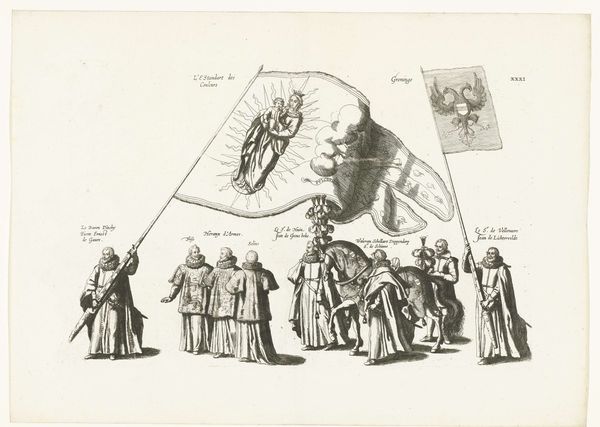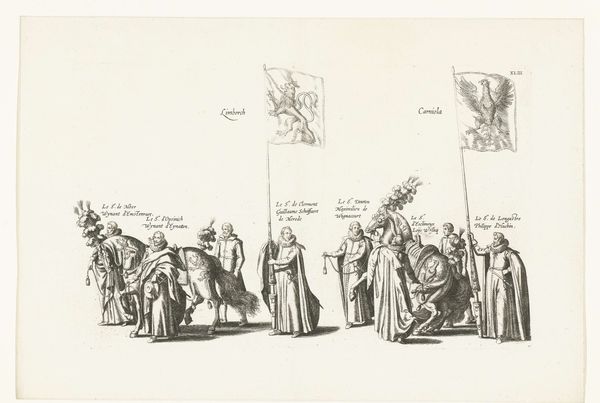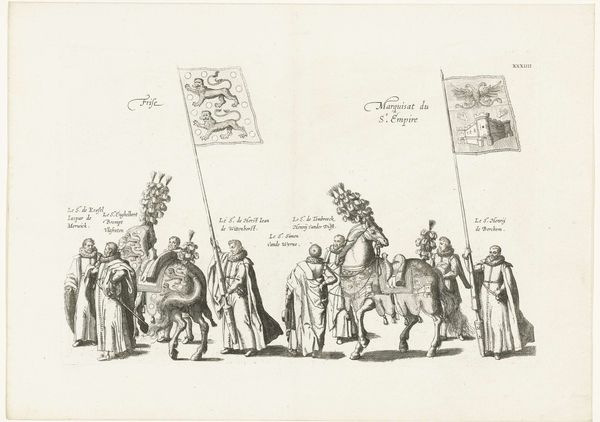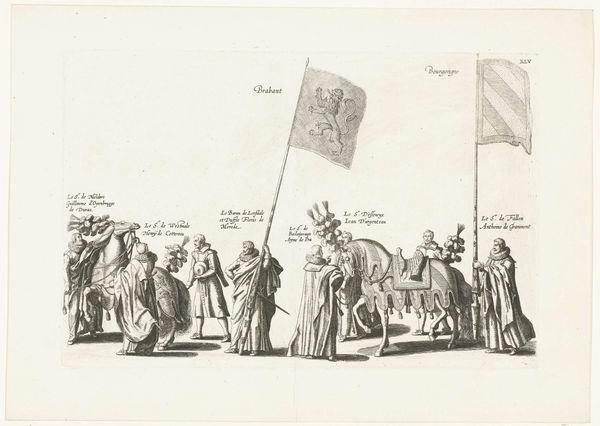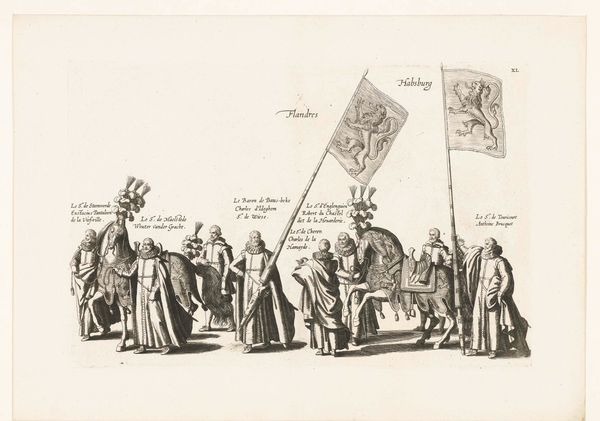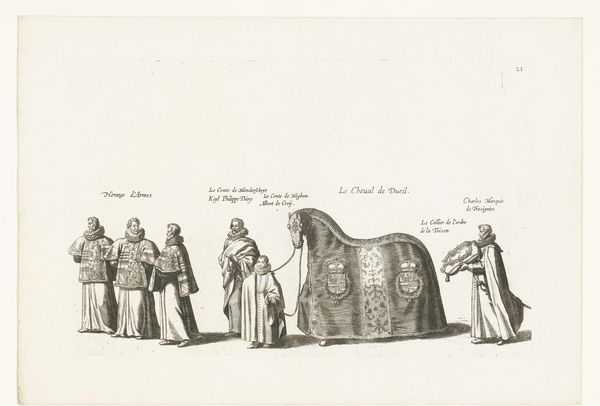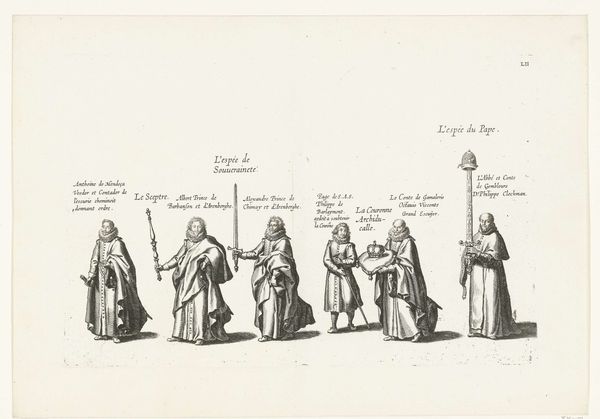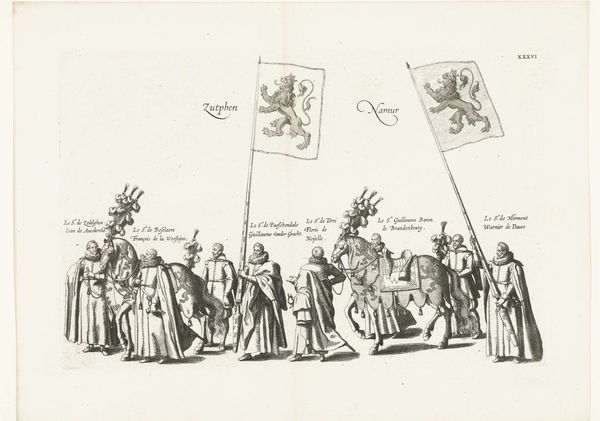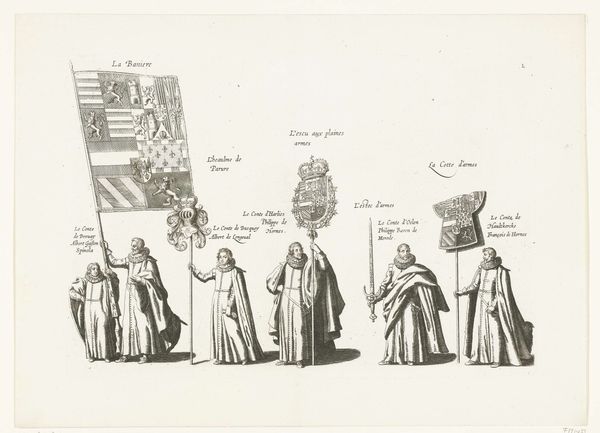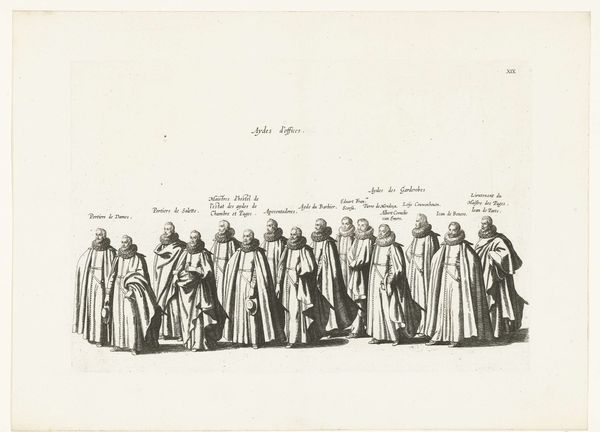
print, engraving
#
baroque
# print
#
pen illustration
#
figuration
#
line
#
history-painting
#
engraving
Dimensions: height 262 mm, width 370 mm
Copyright: Rijks Museum: Open Domain
Curator: This print by Cornelis Galle I, titled "Begrafenisstoet van aartshertog Albrecht," or "Funeral Procession of Archduke Albrecht," was created around 1622 or 1623, now housed here at the Rijksmuseum. Editor: It strikes me as a solemn choreography, all sharp lines and hierarchical ordering, even in mourning. The two banners dominate—they’re practically characters themselves. Curator: They are indeed central. Albrecht's reign marked a period of relative peace and prosperity for the Southern Netherlands after decades of war, which helps explain this kind of formal, staged display. The print commemorates not just a death but a particular kind of governance. Editor: Look at how laden the banners are with symbols! The lion, the clerical figure with the skull... Even the arrangement speaks volumes, a story about power and succession woven into cloth and ink. Curator: The symbolism is intertwined with political messaging. Albrecht was seen as a stabilizing figure. The banners allude to both temporal power and spiritual authority, reinforcing the legitimacy of Habsburg rule in the region. This image served as a piece of political communication. Editor: The repetition of figures, those dark-clothed dignitaries… it creates an effect of overwhelming presence. Grief and the weight of duty rendered in identical strokes. They become symbols of the collective as much as individuals. Curator: And consider the role of prints like these in disseminating information. In an era before mass media, this print allowed the public to participate vicariously in the rituals of state, reinforcing societal norms and expectations. Editor: It is fascinating how much the visual language has stayed. You see similar deployments of flags or official dress still used at such state events, though possibly now, they're only really recognised by us. It’s a compelling case study in the continuity of power's symbols, right? Curator: Absolutely. Studying this print shows us that the art is embedded in a much wider sociopolitical landscape that we can reconstruct with attention to detail. Editor: Examining this piece, the iconography whispers stories of power and loss and legacy, far beyond the specifics of Albrecht himself. It gives insight to how grief became political in art.
Comments
No comments
Be the first to comment and join the conversation on the ultimate creative platform.
